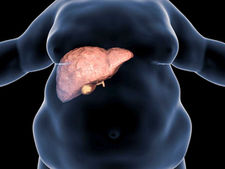
Channel Narrowing
CANAL NIGHTENING (SPINAL STENOSIS) What is canal narrowing?
Vertebrae are bone structures that protect structures called spinal cord and nerve fibers. Spinal cord and nerve fibers start from the lower part of the head and descend downwards along the canal in the middle of the vertebrae. There are structures called discs between the vertebrae that connect the vertebrae to each other. These discs lose their amount of fluid as they get older. This may cause the disc's ability to carry loads to decrease and harden, shifting from its location to the spinal canal and narrowing the diameter of the canal. Another cause of spinal stenosis is the enlargement of the facet joints behind the vertebrae.
What are the symptoms of canal narrowing?
Spinal stenosis may not always cause symptoms. Studies have shown that there are many people who have no symptoms but have severe spinal stenosis. If any, specified; pain, numbness and cramps in the back or legs. Weakness in the legs may also occur. Rarely, it may cause bladder and/or bowel problems. Complaints may increase with prolonged standing and walking. Symptoms may be continuous or come and go in the form of seizures. After walking for a limited time, you may need to stop and squat due to weakness and numbness in your legs. Walking distance may gradually decrease. What are the treatment options for canal narrowing? Symptoms of spinal stenosis often cause patients to avoid movement. This situation causes a decrease in bending and durability. Physical therapy or an exercise program is important to strengthen muscles and restore bending ability. Aerobics, cycling and walking are recommended. Because such actions increase the amount of blood coming to the nerves and thus reduce the symptoms of narrowing. Additionally, exercises that strengthen the back, abdominal and leg muscles may also be recommended. If necessary, a walking aid can be used to make walking easier and safer. Spinal stenosis is not a dangerous condition in adults unless significant and progressive leg weakness develops and there are bladder or bowel problems. In such cases, the aim of treatment is to preserve the patient's quality of life and, if there is pain, to control the pain. When the necessary indications are provided, surgical methods that the doctor deems appropriate can also be used. The purpose of the surgical intervention is to relieve the pressure and expand the diameter of the canal. This procedure is called lumbar decompression. Laminectomy is another surgical method that can be chosen. In this method, the bones in the back are removed and the narrowed bone canal is widened. Leg pain and loss of function of the leg improve with surgical intervention with the correct indication. Nowadays, patients can return to their normal lives a few weeks after the operation.
FOR INFORMATION AND APPOINTMENT, YOU CAN LEAVE YOUR NUMBER OR ASK OUR EXPERTS
YOU CAN LEAVE YOUR NUMBER FOR INFORMATION AND APPOINTMENT AND ASK QUESTIONS TO OUR EXPERTS



-04.png)
-06.png)
-05.png)
-08.png)
-07.png)























